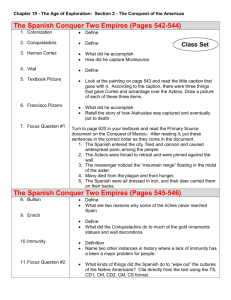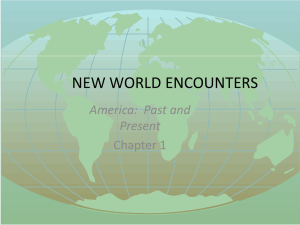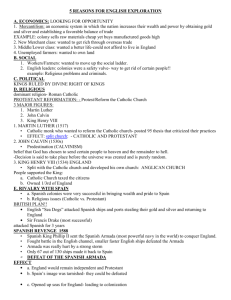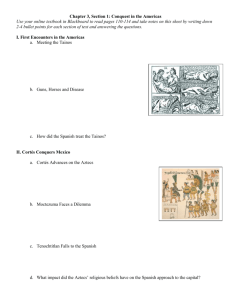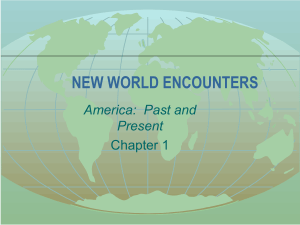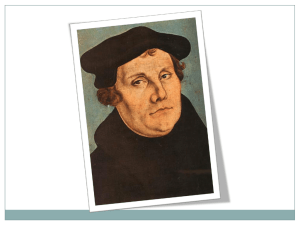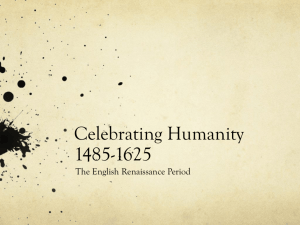Post-Columbian Europeans in the New World & Europe
advertisement
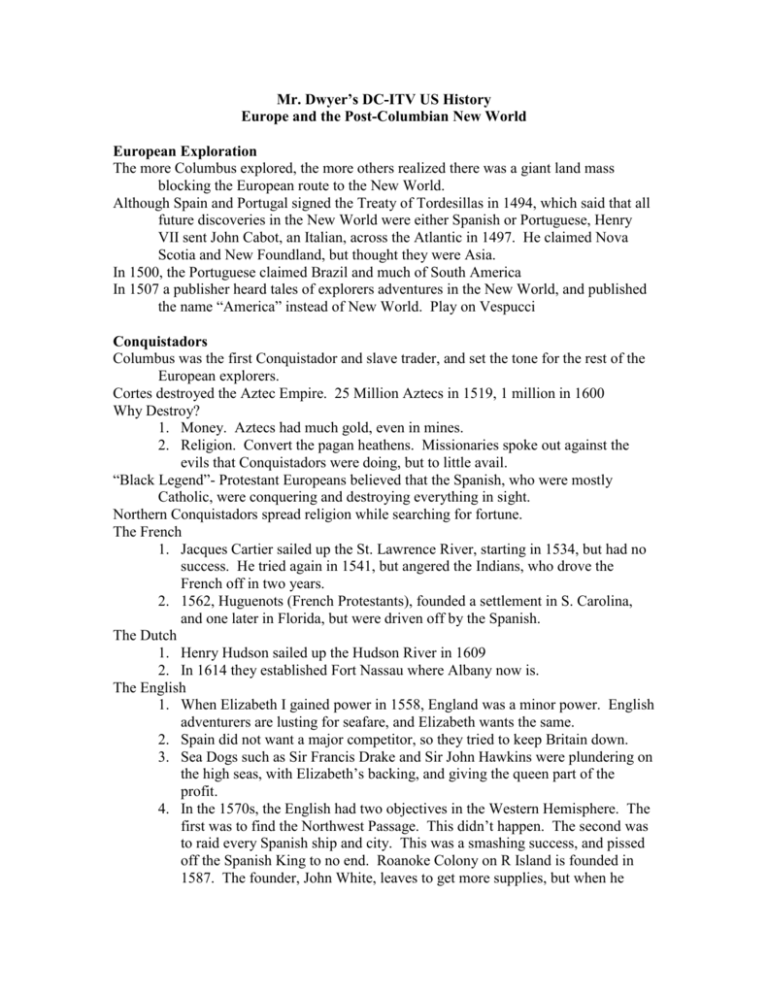
Mr. Dwyer’s DC-ITV US History Europe and the Post-Columbian New World European Exploration The more Columbus explored, the more others realized there was a giant land mass blocking the European route to the New World. Although Spain and Portugal signed the Treaty of Tordesillas in 1494, which said that all future discoveries in the New World were either Spanish or Portuguese, Henry VII sent John Cabot, an Italian, across the Atlantic in 1497. He claimed Nova Scotia and New Foundland, but thought they were Asia. In 1500, the Portuguese claimed Brazil and much of South America In 1507 a publisher heard tales of explorers adventures in the New World, and published the name “America” instead of New World. Play on Vespucci Conquistadors Columbus was the first Conquistador and slave trader, and set the tone for the rest of the European explorers. Cortes destroyed the Aztec Empire. 25 Million Aztecs in 1519, 1 million in 1600 Why Destroy? 1. Money. Aztecs had much gold, even in mines. 2. Religion. Convert the pagan heathens. Missionaries spoke out against the evils that Conquistadors were doing, but to little avail. “Black Legend”- Protestant Europeans believed that the Spanish, who were mostly Catholic, were conquering and destroying everything in sight. Northern Conquistadors spread religion while searching for fortune. The French 1. Jacques Cartier sailed up the St. Lawrence River, starting in 1534, but had no success. He tried again in 1541, but angered the Indians, who drove the French off in two years. 2. 1562, Huguenots (French Protestants), founded a settlement in S. Carolina, and one later in Florida, but were driven off by the Spanish. The Dutch 1. Henry Hudson sailed up the Hudson River in 1609 2. In 1614 they established Fort Nassau where Albany now is. The English 1. When Elizabeth I gained power in 1558, England was a minor power. English adventurers are lusting for seafare, and Elizabeth wants the same. 2. Spain did not want a major competitor, so they tried to keep Britain down. 3. Sea Dogs such as Sir Francis Drake and Sir John Hawkins were plundering on the high seas, with Elizabeth’s backing, and giving the queen part of the profit. 4. In the 1570s, the English had two objectives in the Western Hemisphere. The first was to find the Northwest Passage. This didn’t happen. The second was to raid every Spanish ship and city. This was a smashing success, and pissed off the Spanish King to no end. Roanoke Colony on R Island is founded in 1587. The founder, John White, leaves to get more supplies, but when he returns he finds little evidence the colony existed. He found only rusty armor, moldy books, and the word CROATOAN carved into a post. This is considered a lost colony. Protestant Reformation Many are Catholic. Pope #1 in Europe, both religiously and socially. 1517: Protestant Reformation changed Christianity forever. Catholics had to pay to keep themselves out of Purgatory, which Luther disagreed with. Luther also believed one could not buy salvation with good works. He believed man must choose to be born again, and only then could one enter heaven. John Calvin, who for the most part agreed with Luther, disagreed on this last point. Calvin believed in predestination. Counter Reformation: Catholics rebound from accusations of misconduct. Jesuits are created to become teachers and missionaries to the newly discovered lands. The Roman Catholic Church is also created. Anglican Church: English King Henry VIII wanted a divorce, the pope wouldn’t grant it, so KH8 created the Church of England, with himself as its head. Puritans become common in the mid-16th Century. They believe man must not only live an outwardly moral life, but MUST also make a commitment to God and see a change in their lives. In Britain, the Anglicans and Puritans will fight.
